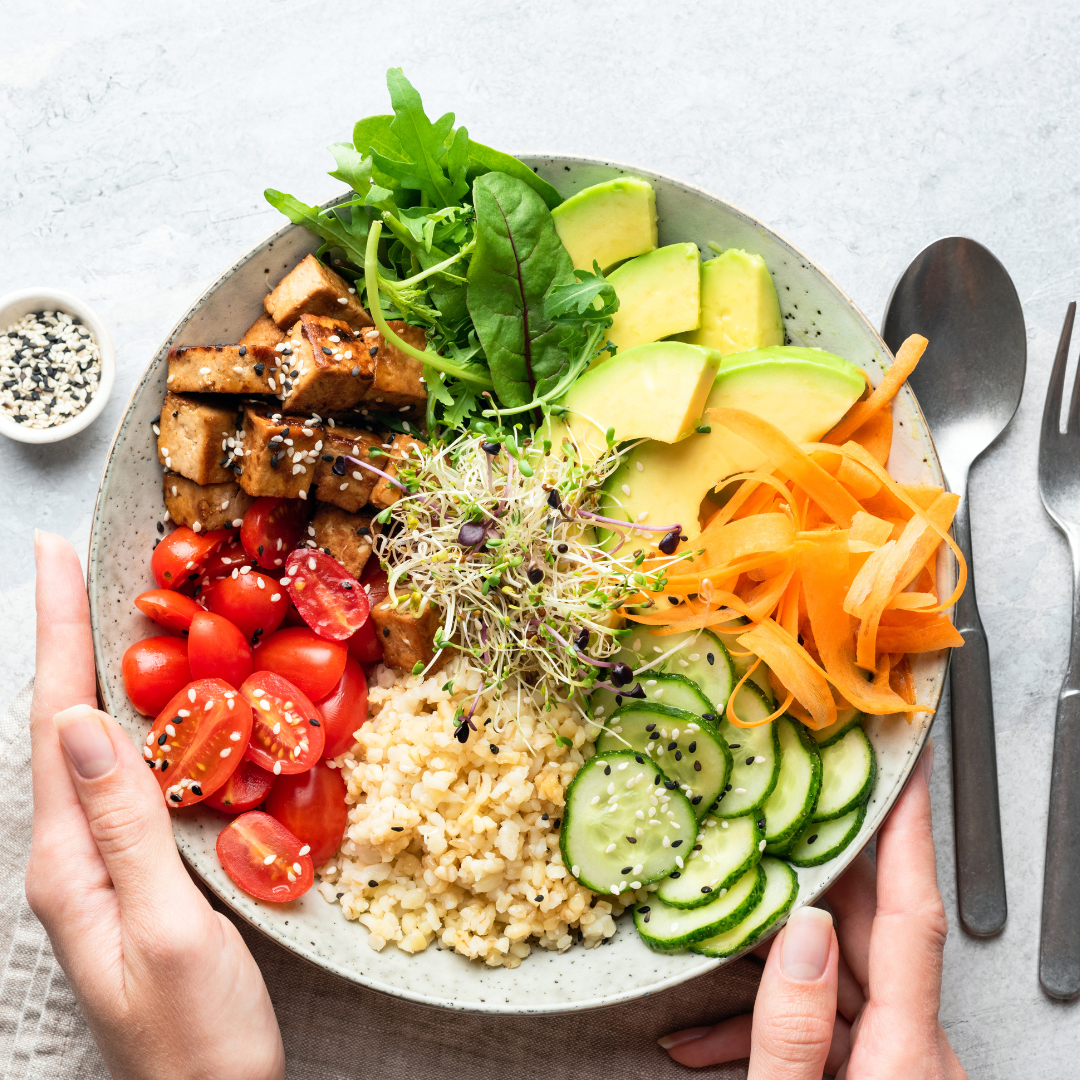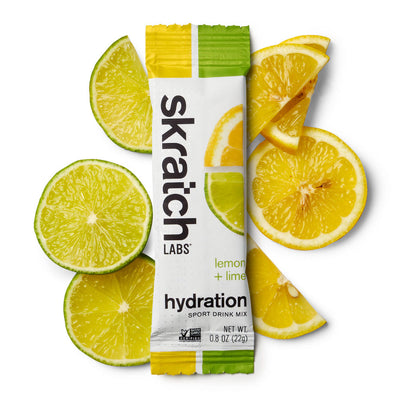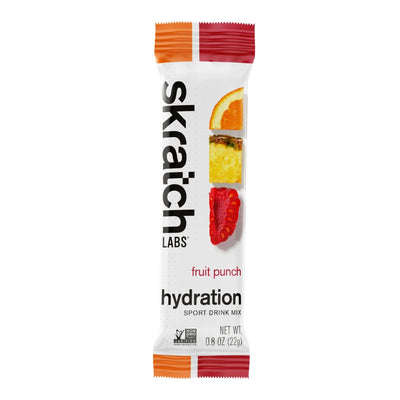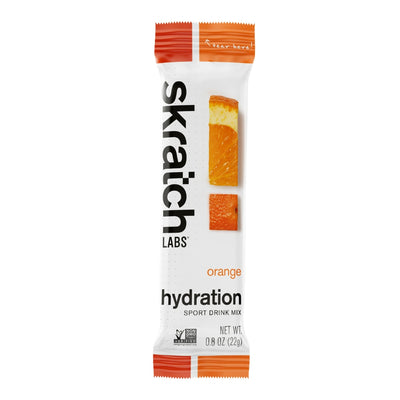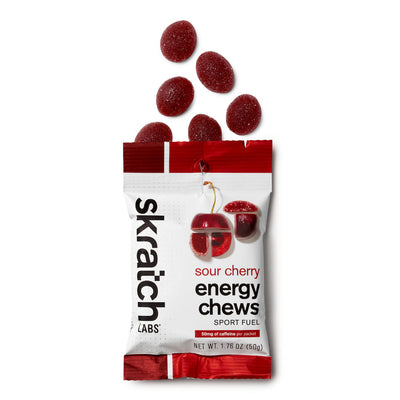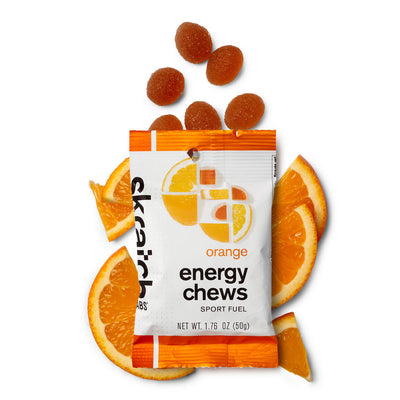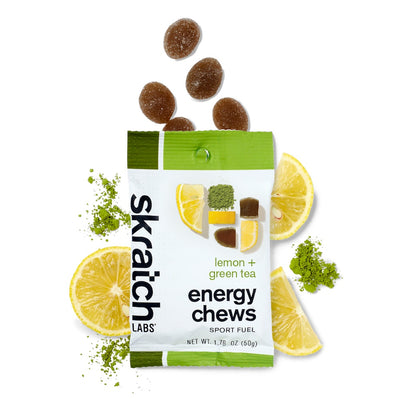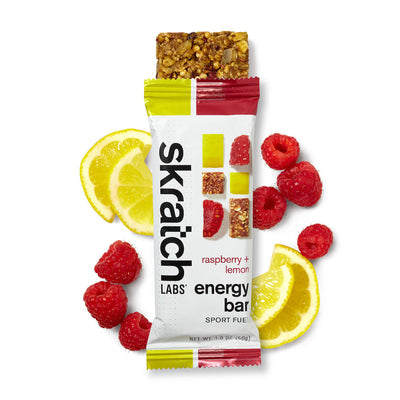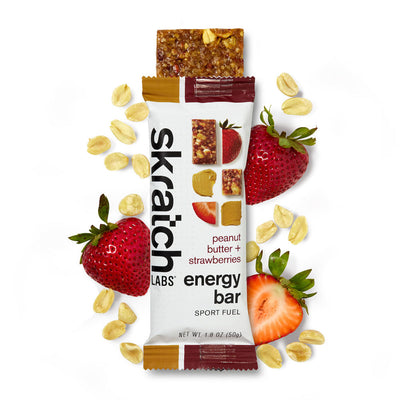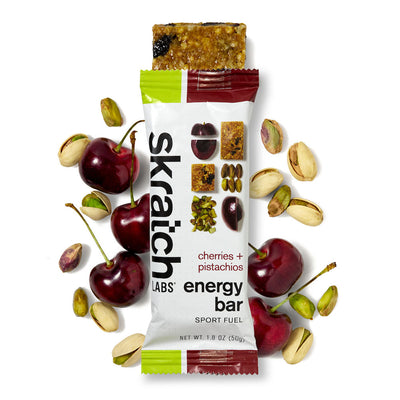Feed the Injury: Fueling for Injury Recovery

Written by: Hannah Archer
Many of us seek out sports nutrition recommendations to optimize athletic performance, but what happens when we are sidelined from our favorite sports and activities as a result of an injury? Perhaps you are like us and are curious as to whether a specified dietary plan has the potential to enhance injury recovery…is there such a thing as rehabilitation nutrition? Will following specific macronutrient and micronutrient quantities really make a difference in our recovery progress? Here’s the deal: it depends.
When it comes to injury recovery, there's no need for elaborate or specialized measures. You don't have to consume five gallons of bone broth daily or adhere to some secret formula. Instead, it’s about ensuring that you provide your body with the right nourishment to support its natural healing process. While this "right" nutrition won't necessarily expedite the healing process, maintaining a well-rounded, balanced diet will minimize the likelihood of incurring more deficits to injury recovery.
transitioning through healing
Injury recovery progresses through three main stages: inflammation, proliferation, and remodeling. Although each phase requires specific nutrients to facilitate healing, maintaining a diet that supports the recovery process is of utmost importance in allowing you to return to sport.
1. Inflammation
This first stage of recovery following an injury is characterized by the activation of the immune system. Specifically, immune cells rush to the injured side for the first few days post-injury, which is critical for optimal healing (Landen et al., 2016; Stechmiller, 2010). During this initial stage, it's crucial not to hinder this natural inflammatory response, but there's no need to go to extremes, as too little or too many inflammatory markers can be counterproductive to healing (Parisien et al., 2022). Simply choose a balanced diet that includes fresh fruits and vegetables while limiting your intake of refined carbohydrates and simple sugars.
Carbohydrates are your body's primary source of energy, and are especially important during this first stage of the healing process. It's essential not to deprive yourself of carbohydrates, as this can lead to the breakdown of muscle tissue (Papadopoulou, 2020). Therefore, maintaining that general recommendation of roughly 50% of your plate being composed of carbohydrates still stands during this time (Ryan et al., 2020). However, the type of carbohydrate does differ when fueling for training or injury. Prioritize complex carbohydrates found in fruits, vegetables, dairy, and whole grains. This straightforward approach provides the long-lasting energy necessary for recovery and will support your body’s inflammatory response without any further need for complicated dietary plans.
2. Proliferation
In the next stage, your body begins removing damaged tissue and building new tissue while restoring blood flow to the injured area (Landen et al., 2016). During this process, lipase activity (or the breakdown of fats such as triglycerides) is heightened to supply energy to the site of injury (Quintero et al., 2018). Ensuring that 20-25% of your caloric intake is derived from fats is not only essential for maintaining overall health but also plays a critical role in supporting your body's healing process (Ryan et al., 2020). Thus, a well-balanced approach to fat intake is key. Opt for sources of healthy fats, like monounsaturated fatty acids found in oils, avocados, and nuts, as well as omega-3 fatty acids present in fatty fish like salmon and tuna. This will support the proliferation process without the need for any special, hard-to-find ingredients or supplements.
3. Remodeling
The final stage of the injury healing process consists of the maturation and strengthening of the injured site (Landen et al., 2016). The remodeling phase and overall healing process is whey better with a boost of protein (pun intended).
Protein assumes a prominent role any time the body experiences a health disruption. In situations that restrict weight-bearing activities, such as injuries or surgeries, there is a risk for muscle atrophy – a fancy term to describe decreased muscle mass us exercise physiology nerds like to use. During periods of prolonged immobilization, muscle atrophy can occur at an astonishing rate of 0.5% per day of inactivity (Philips et al., 2009). This rapid decline in muscle mass is associated with a subsequent decrease in muscle strength. For instance, one study discovered that an 8% reduction in quadriceps muscle mass can lead to a 23% decrease in muscle strength (Wall et al., 2014) – crazy, right? Therefore, to avoid extensive loss of muscle mass and strength, amp up your protein intake to effectively maximize muscle protein synthesis.
For injured athletes to maintain muscle mass, research recommends aiming for approximately one gram of protein per pound of body weight evenly spaced 4-6 times throughout the day, which is about 1.5 times the recommended intake for athletes (Wall et al., 2014; Moore et al., 2009). Yes, that’s around 150 grams of protein for a 150-pound individual! To further maximize your protein intake, try to consume your final protein-rich meal before bedtime as sufficient protein intake prior to sleep stimulates protein synthesis rates (Trommelen and van Loon, 2016). However, ensuring that you are ingesting all essential amino acids (the building blocks of proteins), and enough of them, is not as simple as just increasing your consumption of protein powder. Rather, seek out a variety of protein sources, preferably whole foods. Dairy products, eggs, meat, tempeh, tofu, and beans are all excellent choices. Maintaining a balanced diet, focused on whole foods, can help to maximize your protein intake without any excessive effort.
Collagen, the foundation for your body’s bones, muscles, connective tissue, and skin, is also prominent in the remodeling stage and overall recovery process (Quinter et al., 2018; Hwang et al., 2017; Demling, 2009). Accordingly, choose to add collagen-rich foods or collagen supplements of at least 15 g/day to your diet to increase your body’s production of collagen and support the final stage of your body’s injury recovery (Khatri et al., 2021). This simple addition can naturally enhance your body's ability to heal and recover.
Although each stage of recovery may have specific nutritional requirements, maintaining a balanced intake of macronutrients – proteins, carbohydrates, and fats – throughout the entire recovery process is essential not only to support healing but also for overall health.
missing ingredients
Go down the vitamin and supplement aisle of any grocery store, and you’ll likely be overwhelmed with the amount, varieties, and pronunciation of available supplements. While supplements and vitamins might seem like a tempting solution, there's no need to overcomplicate your nutrition. A balanced diet, consisting of real foods rich in micronutrients, should cover most of your needs. However, some injuries or situations may require special dietary adjustments or supplements. For example, bone fractures may necessitate additional calcium and vitamin D intake, whereas individuals with muscle, tendon, and/or ligament injuries may benefit from increased amounts of protein and collagen in their diet (Papadopoulou, 2020; Ryan et al., 2020; Quintero et al., 2018; Tipton, 2015). Although certain injuries may benefit from supplementation if individuals are unable to satisfy macronutrient and micronutrient requirements through their diet, supplementation is not always necessary for successful recovery. Thus, consulting with a registered dietitian can help determine whether your situation warrants the need for supplementation.

energy for energy
The human body adheres to the first law of thermodynamics, stating that energy cannot be created or destroyed; instead, it undergoes transformation from one form to another. Therefore, the change in your body’s macronutrient energy stores is equal to the difference between your energy intake (food consumption) and your body’s energy expenditure (Hall et al., 2012). Manipulating your energy input or energy expenditure is influential in body weight regulation.
It’s common to think that eating less during recovery in order to compensate for training less is the appropriate approach. However, your body will speed its metabolic rate by a remarkable 15-50% depending on the injury’s severity (Tipton, 2015; Cuthbertson, 1930). This is primarily resulting from an increase in heart rate and activation of the immune system in response to an acute injury. In other words, the body is under stress, effectively elevating metabolic demands (Quintero et al., 2018).
Consequently, you might experience a heightened sense of hunger despite not engaging in your usual exercise regimen. Rather than resisting such urges, it’s essential to embrace them. This is a time when you should allow yourself to indulge and not worry about calorie restriction. While the temptation to reduce calorie intake may arise, it’s crucial to ensure that you are consuming enough to avoid potential nutrient deficiencies that may impede the healing process.
So, don’t be alarmed if you find yourself eating more than usual during your recovery. It’s entirely okay and actually preferred. It ensures that you have met your macronutrient requirements. Additionally, it's essential to let go of concerns about maintaining your body weight and instead focus on nourishing your body adequately. Your main priority should be to eat in response to what your body requires at this time. There will be ample time to address weight-related goals once you have fully recovered.

drink up
Hydration remains a critical factor even during the recovery from injury. A seemingly small level of dehydration – just 1% of your body weight – can significantly disrupt your blood osmolarity and hydration status (Lee et al., 2017). Therefore, it's important to find the right balance here. Although drinking to quench your thirst is essential, it's equally crucial to be aware of overhydration, as diluting your body's blood sodium levels can have adverse effects. If you find yourself frequently urinating every 20-30 minutes, that’s a clear indicator of potential overhydration. However, for specific injuries like delayed onset muscle soreness (DOMS) and rhabdomyolysis, which can take a significant toll on the kidneys, increasing your fluid intake is advised. Moreover, cellular dehydration can trigger protein catabolism, thereby decreasing muscle mass (Hill and Hill, 1998). Hence, focusing on replenishing your body with potassium can be a proactive step to counteract further setbacks in the recovery process. Targeting a balanced ratio of 1500 mg of sodium to 500 mg of potassium is an ideal guideline to maintain optimal hydration levels. Adequate hydration is not only vital for overall health but becomes particularly important to facilitate the body's healing process.

recipe for successful recovery
Maintaining a commitment to consistent nutrition is key to effective injury recovery. In fact, your dietary approach won't deviate significantly from what promotes overall health and peak performance. There's no need to delve into intricate dietary plans during this time. Instead, prioritize a well-balanced, whole foods diet that naturally supports your body's healing process. By keeping your nutrition simple and effective, and by listening to your body's needs, you'll find yourself back on your feet (or in the saddle) and ready to resume your active lifestyle in no time. So, don’t sweat the details – let great nutrition be your guide.
References
Cuthbertson DP. (1930). The disturbance of metabolism produced by bony and non-bony injury, with notes on certain abnormal conditions of bone. Biochemical Journal, 24(3), 1244-1263. https://doi.org/10.1042%2Fbj0241244.
Demling RH. (2009). Nutrition, Anabolism, and the Wound Healing Process: An Overview. Eplasty, 9(9), 65-94.
Hall KD, Heymsfield SB, Kemnitz JW, Klein S, Schoeller DA, Speakman JR. (2012). Energy balance and its components: implications for body weight regulation. American Journal of Clinical Nutrition, 95(4), 989-994. https://doi.org/10.3945%2Fajcn.112.036350.
Hill AG, Hill GL. (1998). Metabolic response to severe injury. British Journal of Surgery, 85(7), 884-890. https://doi.org/10.1046/j.1365-2168.1998.00779.x.
Hwang J, Huang Y, Burwell TJ, Peterson NC, Connor J, Weiss SJ, Yu SM, Li Y. (2017). In Situ Imaging of Tissue Remodeling with Collagen Hybridizing Peptides. ACS Nano, 11(10), 9825-9835. https://doi.org/10.1021%2Facsnano.7b03150.
Khatri M, Naughton RJ, Clifford T, Harper LD, Corr L. (2021). The effects of collagen peptide supplementation on body composition, collagen synthesis, and recovery from joint inquiry and exercise: a systematic review. Amino Acids, 53(10), 1493-1506. https://doi.org/10.1007/s00726-021-03072-x.
Landen NX, Li D, Stahle M. (2016). Transition from inflammation to proliferation: a critical step during wound healing. Cellular and Molecular Life Sciences, 73, 3861-3885. https://doi.org/10.1007/s00018-016-2268-0.
Lee EC, Fragala MS, Kavouras SA, Queen RM, Pryor JL, Casa DJ. (2017). Biomarkers in Sports and Exercise: Tracking Health, Performance, and Recovery in Athletes. Journal of Strength and Conditioning Research, 31(10), 2920-2937. https://doi.org/10.1519%2FJSC.0000000000002122.
Moore DR, Robinson MJ, Fry JL, Tang JE, Glover EI, Wilkinson SB, Prior T, Tarnopolsky MA, Philips SM. (2009). Ingested protein dose response of muscle and albumin protein synthesis after resistance exercise in young men. American Journal of Clinical Nutrition, 89(1), 161-168. https://doi.org/10.3945/ajcn.2008.26401.
Papadopoulou SK. (2020). Rehabilitation Nutrition for Injury Recovery of Athletes: The Role of Macronutrient Intake. Nutrients, 12(8), 2449-2465. https://doi.org/10.3390%2Fnu12082449.
Parisien M, Lima LV, Dagostino C, El-Hachem N, Drury GL, Grant AV, Huising J, Verma V, Meloto CB, Silva JR, Dutra GGS, Markova T, Dang H, Tessier PA, Slade GD, Nackley AG, Ghasemlou N, Mogil JS, Allegri M, Diatchenko L. (2022). Acute inflammatory response via neutrophil activation protects against the development of chronic pain. Science Translational Medicine, 11(14), 644-667. https://doi.org/10.1126/scitranslmed.abj9954.
Philips SM, Glover EI, Rennie MJ. (2009). Alterations of protein turnover underlying disease atrophy in human skeletal muscle. Journal of Applied Physiology, 107(3), 645-654. https://doi.org/10.1152/japplphysiol.00452.2009.
Quintero KJ, Resende A, Leite GSF, Lancha AH. (2018). An overview of nutritional strategies for recovery process in sports-related muscle injuries. Nutrire, 43, 27-36. https://doi.org/10.1186/s41110-018-0084-z.
Ryan AES, Hirsch KR, Saylor HE, Gould LM, Blue MNM. (2020). Nutritional Considerations and Strategies to Facilitate Injury Recovery and Rehabilitation. Journal of Athletic Training, 55(9), 918-930. https://doi.org/10.4085%2F1062-6050-550-19.
Stechmiller JK. (2010). Understanding the role of nutrition and wound healing. Nutrition in Clinical Practice, 25(1), 61-68. https://doi.org/10.1177/0884533609358997.
Tipton KD. (2015). Nutritional Support for Exercise-Induced Injuries. Sports Medicine, 45, 93-104. https://doi.org/10.1007%2Fs40279-015-0398-4.
Trommelen J, van Loon LJC. (2016). Pre-Sleep Protein Ingestion to Improve the Skeletal Muscle Adaptive Response to Exercise Training. Nutrients, 8(12), 763. https://doi.org/10.3390%2Fnu8120763.
Wall BT, Morton JP, van Loon LJC. (2014). Strategies to maintain skeletal muscle mass in the injured athlete: Nutritional considerations and exercise mimetics. European Journal of Sport Science, 15(1), 53-62. https://doi.org/10.1080/17461391.2014.936326.




